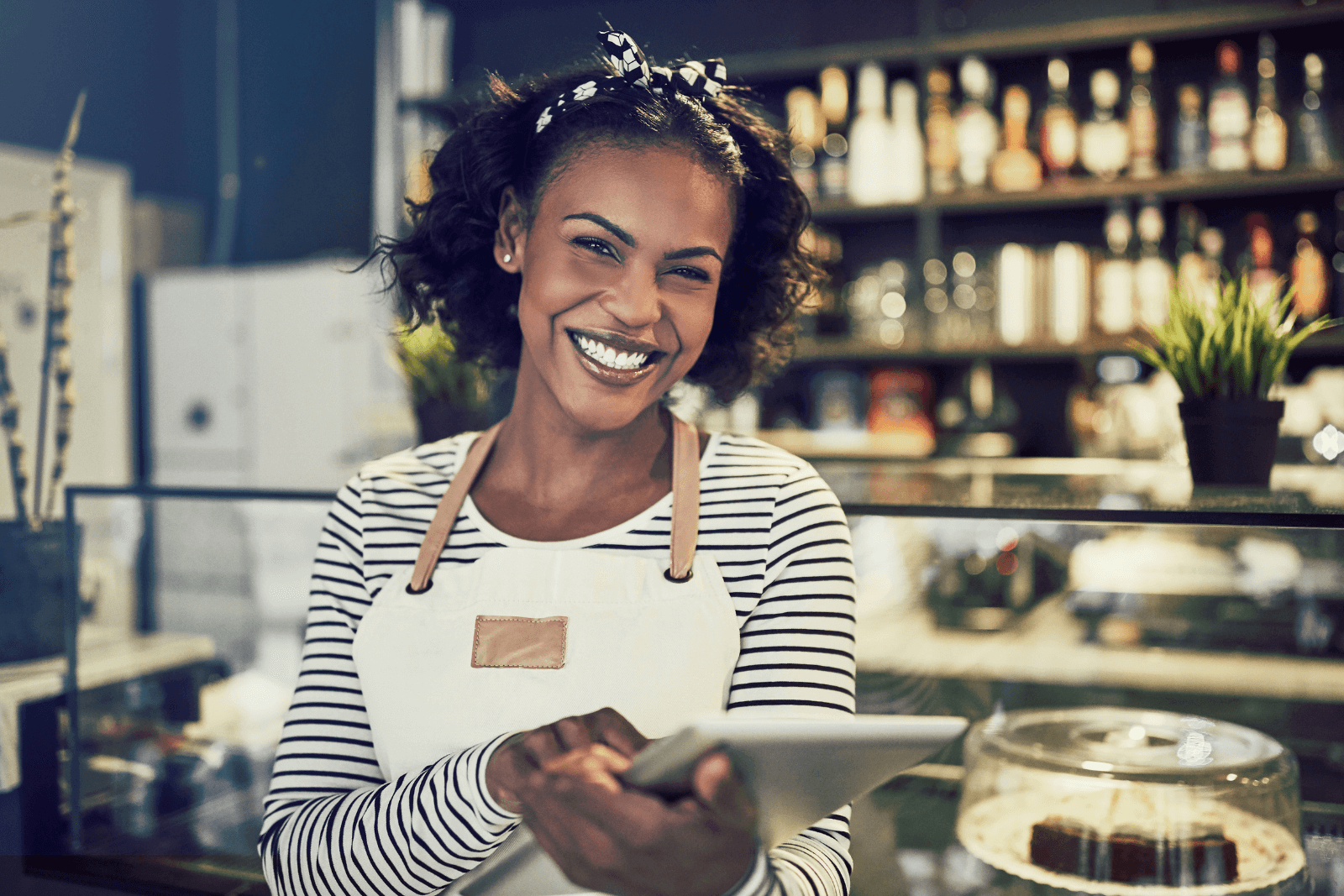Key Takeaways:
- 47% of diners find online reservations easier than phone calls.
- Montezuma’s saw a 33% increase in online reservations after implementing an online booking widget.
- 5–20% of revenue can come from consistent branding.
- Booking widgets reinforce brand identity across multiple digital channels.
Have you ever wondered why your dining room isn’t buzzing to its full potential, even though your food gets rave reviews?
The culprit might not be your menu or ambiance, but your booking process. Today’s diners want to secure a table in seconds, without awkward phone calls or slow-loading forms.
In this article, we’ll share five reasons why an online booking widget could be the missing ingredient to keep your tables turning.
Boosts Online Visibility
Think of your booking widget as more than a table-reservation tool; it’s a visibility engine.
By embedding it across your website, social media platforms, and even third-party tools like Google Business Profile (GBP), you create an omnichannel presence that multiplies opportunities for guests to find and book with you.
Ashley Do, a Global Business Development Expert at Google, highlights the role of GBP in attracting customers:
Illustration: Tablein / Quote: SevenRooms
In this digital dining landscape, diners expect instant access to real-time table availability and waitlist management, without needing to pick up the phone.
In fact, AYTM research found that 47% of diners find making reservations online easier than calling the restaurant directly.
Illustration: Tablein / Data: Aytm
That’s nearly half of your target audience ready to engage if you make booking accessible and seamless.
Consider a boutique bistro that integrates its booking widget with Instagram’s “Reserve” button.
By meeting customers where they are already scrolling, wouldn’t they achieve an uplift in their bookings?
Of course.
And there are real-world case studies to prove this.
Take Montezuma’s, a Mexican restaurant chain operating in Australia, for example.
Montezuma’s replaced its manual booking system with the Quandoo booking widget embedded on its website.
Source: Quandoo
This shift drove a 33% increase in online reservations while also saving the front-of-house staff an average of 2 hours per shift.
You can take this a step further by giving potential diners a preview of the experience, such as adding a short description and photo of your restaurant’s seating area.
Darwin Brasserie has done it beautifully by pairing its widget with enticing skyline imagery.
Source: SevenRooms
In restaurant lingo, this approach is like “turning the tables” digitally.
A booking widget placed across the right digital channels doesn’t just drive more reservations.
Rather, it reinforces your brand presence wherever your audience spends time online.
In short, an online booking widget is a visibility and revenue tool rolled into one, and a must-have in any modern restaurant’s digital playbook.
Simplifies Reservations
An online booking widget streamlines reservations, allowing guests to secure a table in just a few clicks.
Let’s be honest. Not everyone enjoys making phone calls.
A study by Uswitch found that 23% of people aged 18–34 never answer calls.
Illustration: Tablein / Data: Uswitch
There are many reasons, but one of them is social awkwardness.
Henry Calson, a 31-year-old lawyer and content creator, explains:
Illustration: Tablein / Quote: BBC
Then there’s the issue of missed calls.
A 2025 survey revealed that 69% of Americans are likely to give up on visiting a restaurant if no one answers the phone—a clear indicator of how crucial it is to offer an alternative like an online booking widget.
Illustration: Tablein / Data: Hospitality Technology
The appeal is simple: widgets offer real-time table availability, ensuring potential guests don’t hang up and look elsewhere.
Ask Your Target Market research cited earlier supports this, with 34% of people saying they’re more likely to choose restaurants that offer online reservations.
But these reservations must be easy to understand and seamless.
A perfect example of this seamlessness is Cactus Club Cafe, a Canadian-owned chain of premium casual restaurants.
Their online booking widget allows guests to select date, time, and party size, with available time slots displayed in clearly labelled black boxes, as shown below.
Source: Cactus Club Cafe
Even better, they show the seating area next to each time slot. This is useful, as most consumers say the best booking experience includes knowing which seating area they’re reserving.
With one click, guests reach a clean booking page where they enter their details and confirm—table secured.
Source: Cactus Club Cafe
Some restaurant chains like Apples & Pears have taken this a step further by including an AI assistant that helps with the bookings.
Source: SevenRooms
The benefits of such online reservation systems extend to your team as well.
With the widget managing bookings automatically, staff no longer need to “man the phones” during peak hours or write reservations on scraps of paper.
This reduces errors, prevents duplicate bookings, and frees up front-of-house staff to focus on delivering a top-notch guest experience.
By making the process effortless for both diners and staff, you boost efficiency and create a smoother journey from first click to first bite.
And isn’t that exactly what every restaurant needs?
Reinforces Brand Identity
Your restaurant’s brand is more than just a logo.
It’s the colors, fonts, and style choice that shape the guest experience.
A customizable online booking widget lets you extend that brand identity into the reservation process, ensuring a consistent and professional feel from start to finish.
Maintaining brand consistency across different channels can be challenging, as Joshua Schmitt, senior designer at 4CDesignWorks, explains.
He says that inconsistent branding can confuse customers.
Illustration: Tablein / Quote: Design Rush
Without this alignment, the booking process can feel disjointed, eroding the polished image you’ve worked hard to create.
And the impact is measurable.
According to Marq, 68% of companies say consistent branding contributes 10–20% of their revenue.
Illustration: Tablein / Data: Marq
When your booking widget mirrors your brand’s visual identity, you’re not just making the reservation process look good—you’re building trust.
And trust is reinforced at every touchpoint, from the moment a diner first sees your listing to the moment they confirm their booking.
But how do you make that happen?
That’s where Tablein’s new customization feature shines.
It goes beyond simply placing your logo on a booking form.
You can choose your brand’s exact colors, upload custom fonts, adjust button styles, and tailor the layout to reflect your restaurant’s property.
Source: Tablein
One example of these settings in action is shown below.
Source: Tablein
You can also integrate high-quality images, highlight your brand tone in microcopy, and ensure that every click feels like part of the same polished experience.
Source: Tablein
This matters even more for larger restaurants that operate across multiple channels.
Whether a guest books via your website, Instagram, or Google Business Profile, the branding should be consistent, as this builds instant recognition.
When every element looks and feels cohesive, guests subconsciously perceive your restaurant as more professional and reliable.
According to Edelman, 81% of consumers say they must trust a brand before buying from it.
Illustration: Tablein / Data: Edelman
In the world of restaurants, that “buy” often happens at the booking stage, making your widget one of the earliest and most important opportunities to establish that trust.
With tools like Tablein, you can create a unified, on-brand booking experience that reinforces your identity at every click, for every guest.
After all, if your brand story starts on the plate, why not let it begin at the booking?
Prevents Overbooking
Overbooking is a surefire way to sour a guest’s experience before the first course even reaches the table.
An online booking system eliminates this risk by allowing only open time slots to be booked.
Without a centralized system, it’s easy for reservations to overlap, especially when bookings come in from multiple channels like phone calls, walk-ins, and social media messages.
This can lead to awkward situations where guests arrive, only to find no table ready for them.
This is not a minor inconvenience.
One 2024 report showed that overbookings negatively impact customer loyalty and result in negative comments.
Real-world experiences also illustrate how damaging this can be.
On Reddit, one diner shared their frustration after arriving for a reservation, only to wait outside for over an hour because the table wasn’t available.
Source: Reddit
In another instance, guests recounted being seated, then hurriedly asked to leave mid-meal to accommodate anticipated reservations, making them feel undervalued and unwelcome.
Source: Reddit
These stories reflect recurring pain points for both guests and hosts.
A well-integrated widget solves this by syncing reservations across all platforms, updating availability instantly to prevent such issues.
Tablein, for example, also offers waitlist management so you can maximize seating without risking the chaos of conflicting bookings.
Source: Tablein
It’s like “keeping your house in order” during a busy service.
By using a booking widget that spans across all reservation channels, you protect your reputation, keep guests happy, and maintain a smooth service flow.
Lowers No-Show Rates
Few things frustrate restaurant owners more than an empty table that could’ve been filled.
A booking widget combats this by sending automatic confirmations and timely reminders, prompting guests to commit to their reservation.
Restaurant no-shows don’t just cost your revenue.
They disrupt your table turnover, staff scheduling, and overall service flow.
According to ResDairy’s UK Hospitality report, 5% of confirmed bookings resulted in no-shows, contributing a loss of £1,325 per restaurant over just 2 months.
Illustration: Tablein / Data: ResDairy
Santiago Gomez, chef at Palo Santo, a restaurant with about 30 cancelations a month, shares his concerns:
“Some nights, we don’t have a waitlist and are left waiting for the reservation to show up. I
Now put this reservation challenge into perspective.
If a visit to your restaurant earns $100, ten no-shows per week equate to $1,000 in lost revenue weekly. Over a year, that adds up to tens of thousands of dollars.
With the right reservation system, you can address this head-on.
Widgets often include SMS and email reminders, as well as waitlist management, ensuring guests are nudged to show up or cancel in advance.
An example of an SMS reminder is shown below.
Source: Omnisend
Edward Christmas, Managing Partner at Bums on Seats, notes that two reminders are typically the sweet spot.
Illustration: Tablein / Quote: SevenRooms
Some systems go further, allowing you to require deposits for high-demand time slots.
This small financial commitment turns a casual booking into a confirmed intention to dine.
Restaurants like the UK’s Three Wise Monkeys already use this approach.
They charge a £5 deposit for reservations, which guests can reclaim when they visit.
Source: Three Wise Monkeys
A smart move, right?
Considering the average no-show rate for restaurants sits at around 20%, these measures can significantly cut losses.
Illustration: Tablein / Data: Touch Bistro
By combining real-time booking tools, automated reminders, and pre-payment options, you protect your revenue and ensure your front-of-house operates smoothly, without unpleasant surprises.
Conclusion
A booking widget isn’t just a feature. It’s a backend hero your restaurant needs.
It increases visibility, prevents overbooking, streamlines reservations, and reinforces your brand identity. On top of that, it reduces no-shows with timely reminders and nudges.
Think of your widget as a digital maître d’. It empowers guests with seamless bookings while giving your team the space to focus on service.
Ready to let technology carry the load?
Your diners and your bottom line are ready for the upgrade.
Get a 30-day Exclusive Trial
As a Tablein blog reader, you’re eligible for an exclusive 30-day free trial to experience our simple reservation solution for your restaurant.
Enter your business email, and we’ll send you all the steps needed to create your account.
Share this
You may also like
ResOS Alternatives for Smooth Restaurant Reservations

7 Features to Look for In a Restaurant Reservation System
